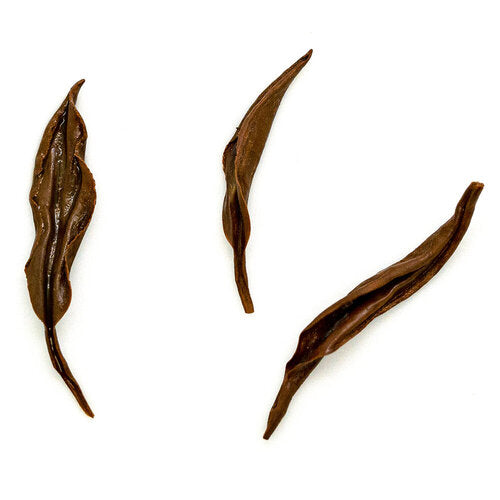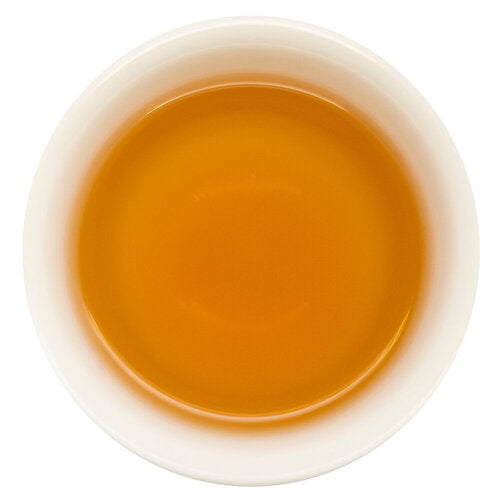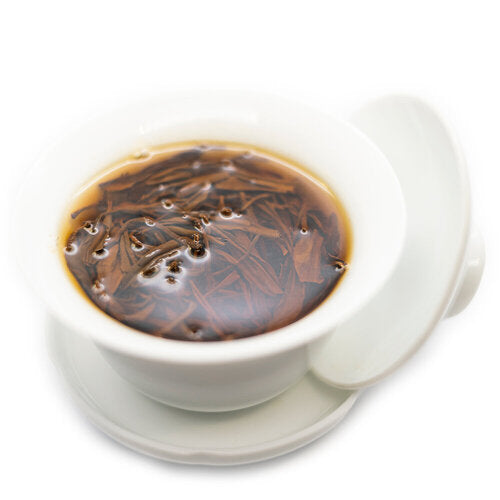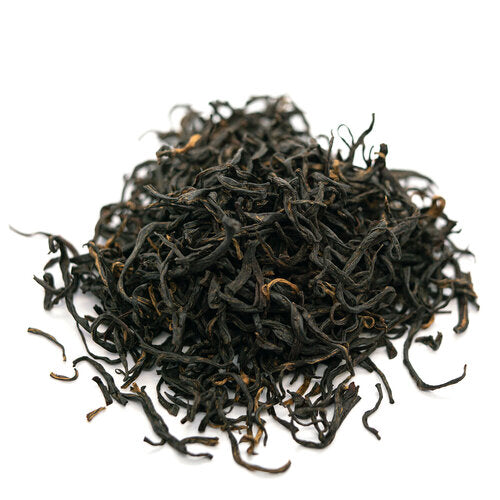This style of red tea (known as black tea to the Western world) and its location are noted amongst China's Famous Teas. Sometimes it is called Keemun. There is deliberately no shape-making step in this tea, and it is known for its strong aroma and notes of rose and honey.
Qi Men Hong Cha means red tea from Qi Men, a township in China. Shi Ji is home to semi-wild tea trees and is one of the hottest lots in recent years since its discovery. Jiang Shang is an area of wild tea trees in the township of Ruo Keng that is historically revered.
Qi Men Hong Cha is a very aromatic red tea with notes of rose and honey. Qi Men belongs to the greater Huang Shan area and produces teas with the signature savory and elegance of the terroir.
Red tea is wilted, then after the stems have lost enough moisture to snap, the wilted leaves are rolled vigorously to break the membranes sufficiently. This step allows complete oxidation that will facilitate the fermentation later on. Red tea is rolled for the most extended amount of time among all teas, often for over an hour. The rolled leaves are shaken loose and evenly layered into a bamboo basket and then covered with wet clothes to ferment. Greener leaves are picked out in a tedious picking step before baking dry over charcoal ash. Ti Xiang is a baking technique designed to enhance and purify the tea's aroma without altering its original flavor profile. It is usually done at least three weeks after the tea has been baked. It is a tricky step that many opt to skip because, if not done correctly can quickly ruin an otherwise mediocre tea.








